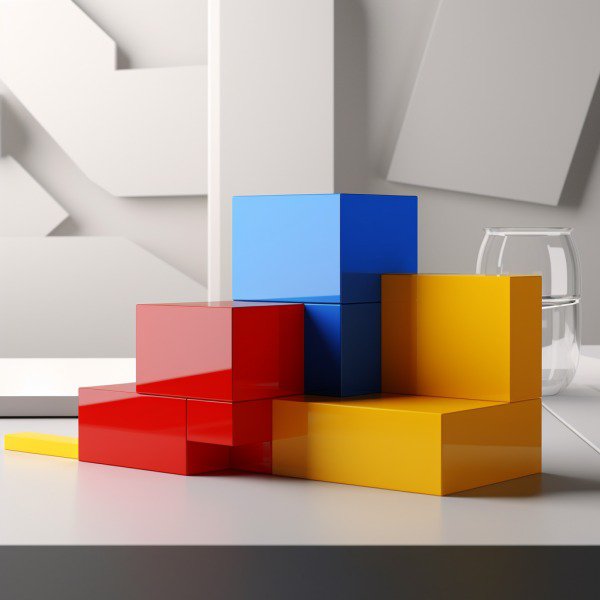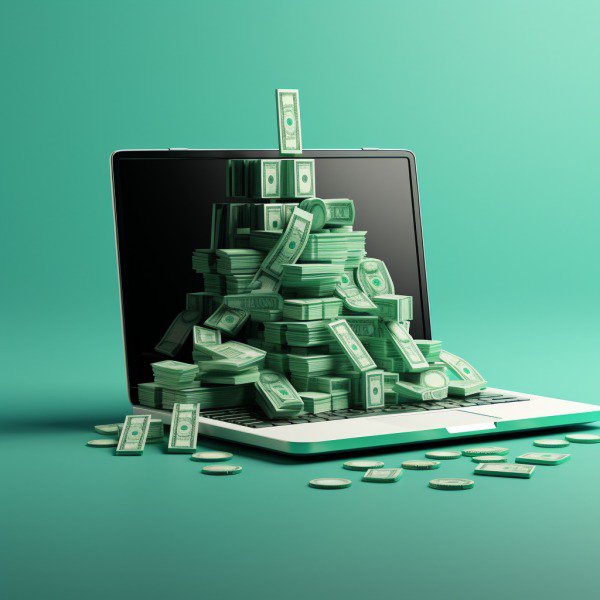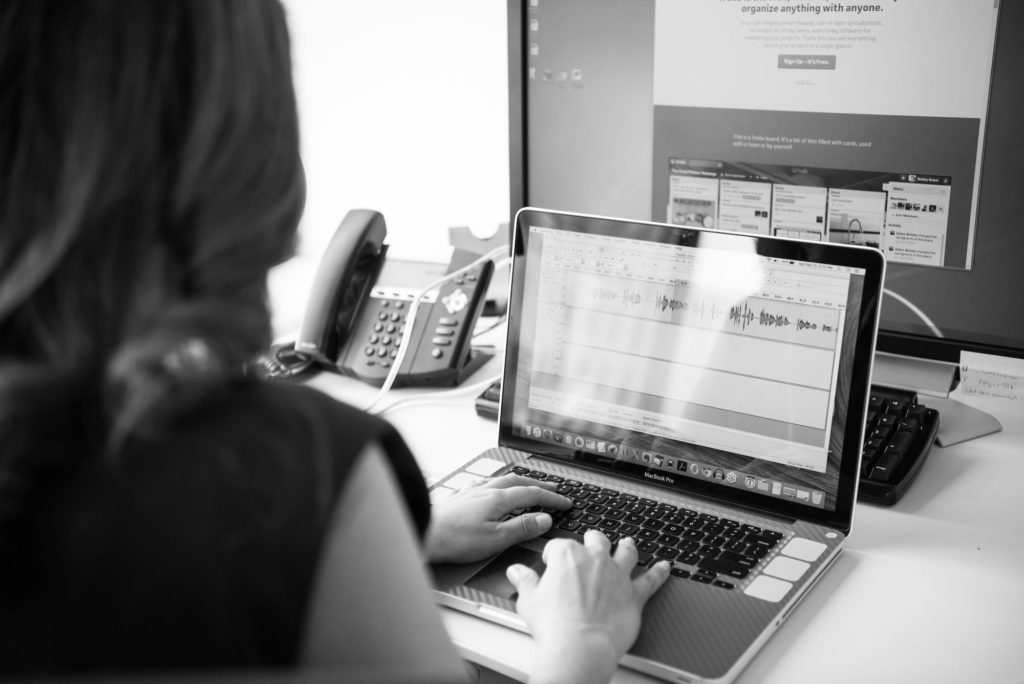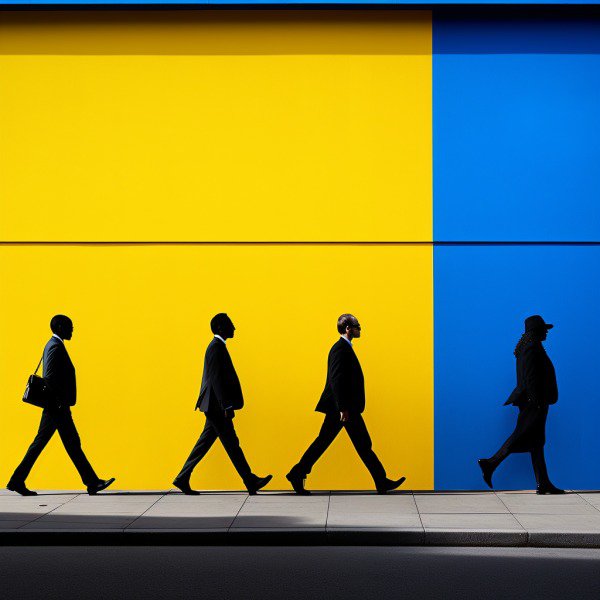Ever looked at an item and thought, “How did they make this?”
In your hands now could be something that started as just a spark in someone’s mind – but through the journey of design and development, it became a reality. The path from concept to the consumer isn’t always smooth sailing though; there are gaps to the bridge, communications to clarify, processes to follow…and yes, even obstacles!
Are you itching to know what happens behind those ‘Product In Development’ doors? Strap in! This article will guide you through each intricate step of the process, from grasping the fundamentals right down to tackling hurdles encountered on this journey. So brace yourself for an intense dose of knowledge – we’re only just warming up!
Table of Contents:
- Understanding the Basics of Production Design and Development
- The Magic Behind Prototyping
- Detailed Product Specifications: The Blueprint of Success
- Finding Your Manufacturing Match
- The Role of Design Match in Bridging the Gap
- Bridging Ideas with Reality
- Nurturing Innovation through Collaboration
- Finding The Perfect Fit
- Ensuring Success Through Transparency
- The Importance of Effective Communication in Product Design and Development
- Nailing Down Objectives Clearly
- Promoting Open Dialogue among Team Members
- Utilizing the Right Communication Tools
- Steps Involved in Product Design and Development Process
- Idea Generation
- Concept Development
- Feasibility Analysis
- Detailed Design & Prototyping
- Product Testing
- Exploring Different Approaches to Product Design and Development
- The Waterfall Approach
- Agile Methodology
- Lean Startup Principles
- Matching the Method to the Project
- The Design Match Difference
- The Impact of Technology on Product Design and Development
- Tech-Powered Innovation in Design
- Faster Prototyping with 3D Printing
- Cutting-edge Tools Streamlining Development Processes
- The Future: Integrating Technology into Design Match’s Processes
- Case Studies of Successful Product Design and Development Projects
- Airbnb: Revolutionizing Hospitality Through User-Centric Design
- Eco-Soap Bank: Turning Waste Into Impactful Products
- Challenges in Product Design and Development and How to Overcome Them
- Finding the Right Designer for Your Project
- Balancing Innovation with Practicality
- Maintaining Clear Communication Channels
- Coping With Technological Shifts
- Managing Time and Resources Effectively
- Facing Regulatory Hurdles
- FAQs in Relation to Production Design and Development
- What is the role of product design and development?
- What’s the difference between product design and product development?
- What are the aspects of product design and development?
- Is product design a good career?
- Conclusion
Understanding the Basics of Product Design and Development
Product design and development is a multifaceted procedure that brings an idea from concept to fruition. It’s about creating something tangible from nothing but an initial concept. There’s level of design thinking in the product design process. Yet, with a clear target market, a good product design team and some user testing – your product will be flying off the shelf.
The first step in this journey often involves sketching out rough ideas or making basic models using software like Fusion 360. This stage allows designers to experiment with different shapes, materials, and features without committing significant resources just yet.
There’s a portion of the product design process that we won’t go into during this article but it’s the market research. It’s understanding your customer base by doing a market analysis to understand the key differences that you want to highlight in the product experience. These unique product qualities help you gain more market share and allow for a longer customer life cycle. These key differences can be product functions or simply creating something aesthetically pleasing. This part of the process that’s a lot of creative thinking and some analytical skills but you got this!

The Magic Behind Prototyping
In the world of product design, prototyping is vital. Prototypes help bring your sketches into the physical realm where they can be touched, tested, and tweaked – all crucial steps before mass production begins. In product development, there can be a desire to skip ahead move on to the manufacturing process. Yet, working on this vital stage of product development will make the entire process smoother.
To make prototypes even more useful tools for improvement and testing feedback loops are built-in during this phase. For instance: imagine if you were designing a new chair. You wouldn’t want users slipping off because the seat was too slippery. So, we test things early on in order to fix them efficiently. You can work with a product designer or industrial designer to test elements such as interaction design.
Detailed Product Specifications: The Blueprint of Success
A detailed specification document acts as your roadmap throughout development. These specs should include everything from dimensions and materials used to how parts fit together – think IKEA instructions but way more detailed.
This kind of documentation also makes sure everyone involved knows exactly what needs doing – avoiding confusion later down line when deadlines start looming closer than ever before.
Finding Your Manufacturing Match
Your next move will involve finding manufacturers who can produce high-quality items at scale while staying within budget constraints; consider it like speed dating but for product developers. The manufacturing processes can feel daunting, but here at Design Match we connect you with product designers with existing manufacturing relationships – making the process smoother.
After choosing a manufacturing partner, you’ll collaborate closely to ensure the final product aligns with your initial vision. You may be familiar with Toyota’s iconic production system, renowned for its groundbreaking strides in efficiency.
Key Thought:
Production design and development transforms an idea into a tangible product. It starts with rough sketches or models, using tools like Fusion 360 to experiment freely. Prototyping then brings these designs to life for testing and tweaking. Detailed specifications act as the blueprint throughout this process, clarifying tasks and avoiding confusion later on. Lastly, securing a reliable manufacturer is vital – they play an instrumental role in making your vision come alive.
The Role of Design Match in Bridging the Gap
Design Match is not just a company, but rather a bridge builder. It connects two crucial elements: inventors and companies with big ideas, and product designers who have the skills to bring those ideas to life.
Imagine you’re an inventor or part of a startup. You’ve got this revolutionary idea for a new product that could change lives or disrupt markets. But there’s one hitch – you don’t know how to design it into something tangible and market-ready.
Bridging Ideas with Reality
This is where Design Match comes in like your trusty superhero sidekick. Our mission? To connect you with top-notch design talent capable of translating your concepts into reality.
We do more than just match make; we help ensure effective collaboration between both parties from start to finish. This way, everyone involved understands each other’s expectations clearly right from day one.
Nurturing Innovation Through Collaboration
We believe innovation doesn’t occur in isolation but thrives when different minds work together towards common goals. ‘Innovation’, after all, isn’t some magical event – it’s about combining diverse talents working as one unit on shared objectives.
- A deep understanding of client needs;
- An appreciation for aesthetics and functionality;
- An ability to anticipate potential roadblocks along the way.
Finding The Perfect Fit
To find the perfect designer-inventor fit is no easy task — it’s akin to finding a needle in a haystack — yet our expertise lies precisely here. We go beyond mere portfolios, looking at a designer’s problem-solving abilities, communication style, and work ethics.
We don’t stop there. After we’ve matched you with the perfect designer for your project, we stick around to make sure things go smoothly. We’re here throughout the process to fix any hiccups that might come up along the way.
Ensuring Success Through Transparency
Our clients’ success stories show that being completely open and honest is something we just can’t compromise on at Design Match. Design Match helps you with product design and product management.
Key Thought:
Design Match isn’t just a company, it’s your superhero sidekick. It connects inventors and companies with big ideas to product designers who can make them real. We don’t just play matchmaker, we stick around to help fix any problems and ensure successful collaboration from start to finish.
The Importance of Effective Communication in Product Design and Development
Communication is essential for a successful product design and development process. It’s not just about speaking or writing clearly, but also understanding and interpreting what others are saying accurately.
McKinsey & Company, a leading global management consulting firm, underlines this point by stating that clear communication can reduce project timelines by up to 30%.
Nailing Down Objectives Clearly
In the early stages of a project, it’s crucial to define objectives explicitly. All stakeholders need to be on board with these goals for seamless progress towards creating an innovative product.
A case study published in Harvard Business Review (HBR) revealed that misunderstanding objectives led to severe delays in projects across multicultural teams. The simple solution? Clearer articulation of goals at every step.
Promoting Open Dialogue among Team Members
An open dialogue between all parties involved – from designers to manufacturers – lets everyone express their ideas freely. This leads not only toward innovation but also prevents misinterpretation down the line.
Google’s Project Aristotle, a research initiative aimed at uncovering what makes a team effective, discovered that psychological safety – being able to take risks without feeling insecure or embarrassed – is critical for fostering an open dialogue environment. (source)
Utilizing the Right Communication Tools
Modern product design and development isn’t just about physical meetings anymore. Thanks to technology, we can use digital tools like Slack, or project management platforms such as JIRA, that allow for real-time communication and collaboration.
Click to Tweet
Steps Involved in Product Design and Development Process
The journey from an idea to a tangible product involves various steps, each crucial for the successful launch of your innovation. Let’s explore these stages.

Idea Generation
Innovation begins with brainstorming. This stage is focused on producing novel ideas that tackle actual issues or better people’s lives. From entrepreneurs to inventors, everyone contributes their unique perspective during this creative process.
Concept Development
This step takes the raw idea and shapes it into a workable concept. It’s where you’ll consider functionality, aesthetics, production methods, and more to ensure your idea can realistically transform into a market-ready product.
Feasibility Analysis
Next up is feasibility analysis – ensuring there’s potential demand for your proposed product before investing more time and resources. Smartsheet offers excellent templates for conducting such analyses efficiently.
Detailed Design & Prototyping
This phase entails detailed design development alongside prototyping – creating physical mock-ups of the product using tools like Fusion 360 by Autodesk. You’ll get first-hand experience with how well (or not) your design works in reality here.
- Making changes based on prototype feedback ensures fewer issues later on.
- You might need multiple iterations before nailing down the final design.
- Fine-tuning details at this stage makes sure everything looks great while functioning perfectly too.
Product Testing
This stage necessitates a thorough examination of your product to certify it adheres to standards and is secure for utilization. There’s nothing more critical than ensuring your products work as intended, offering real value to users. This testing phase can also be called usability studies where you test your product prototypes.
- Functional testing verifies the product does what it’s supposed to do.
- User experience (UX) tests help understand how intuitive and user-friendly the design is.
- For some industries, like construction and manufacturing, safety tests aren’t just a good idea – they’re mandatory.
Key Thought:
Creating a new product starts with brainstorming fresh ideas that solve real problems. After shaping your idea into a feasible concept, you analyze its market potential before moving onto detailed design and prototyping stages. Here, feedback from physical mock-ups helps refine the final design. Finally, rigorous testing ensures quality and user satisfaction.
Exploring Different Approaches to Product Design and Development
No universal formula exists for product design; every item has its own specific needs and target demographic. But why is that? Well, because each product is unique with its own specific requirements and target audience. Just like a bespoke suit fits better than an off-the-rack version, tailor-made design strategies tend to produce more successful products.
Different approaches often cater to various aspects such as cost-effectiveness, innovation levels or time-to-market needs. Let’s dive deeper into some popular methodologies:
The Waterfall Approach
This traditional model follows a linear progression of stages from concept through manufacturing (source). It’s systematic but can be inflexible if changes are needed after starting the process.
Agile Methodology
Agile methodology, on the other hand, promotes adaptability and iterative development. It breaks down projects into smaller tasks tackled in short cycles called ‘sprints’. This method encourages feedback-driven improvements throughout the project lifecycle.
Lean Startup Principles
‘Build-Measure-Learn’ sums up this approach derived from lean manufacturing principles (source). Here, you quickly build a minimum viable product (MVP), measure how it performs in market tests then learn from those metrics for future iterations or pivots.
So which approach should you use? Well…it depends.
Matching the Method to the Project
Product type, business model, team capabilities and customer needs all play a role in determining which approach is most suitable. It’s like picking out an outfit; what works for a casual beach day won’t cut it at a black-tie event.
A complex product with many interdependencies might fare better under waterfall’s structured approach. On the other hand, tech products or those needing rapid iterations may benefit from agile’s flexibility.
The Design Match Difference
We’re thrilled to bring you more information about this project soon. Stay tuned.
Key Thought:
In product design, custom strategies work best because every product is unique. You can use different methods like the Waterfall Approach, Agile Methodology or Lean Startup Principles based on your needs. The right choice depends on factors such as the type of product, business model and customer demands.
The Impact of Technology on Product Design and Development
Product design and development has undergone a significant transformation thanks to the advancements in technology. Digital tools are reshaping how products are designed, prototyped, and developed. But what does this mean for inventors or companies looking to create new products?
Tech-Powered Innovation in Design
Digital techs like 3D design applications, VR and AR have revolutionized the way product designs are visualized. These innovations allow designers to build detailed 3D models that can be tweaked, refined, and viewed from all angles without creating a physical prototype.
This not only saves time but also allows for more creativity during the design phase since changes can be made easily without costly reworks of physical prototypes.
Faster Prototyping with 3D Printing
Forbes reported that global spending on 3D printing reached $10 billion in 2023 alone – an indicator of its growing influence within industries like manufacturing.
Able to transform digital blueprints into tangible objects rapidly, 3D printers give innovators freedom from traditional constraints tied with molding or machining processes. This is particularly useful when testing out new concepts or iterating existing designs because adjustments can quickly be reflected in subsequent prints.
Cutting-edge Tools Streamlining Development Processes
AI and machine learning, cutting-edge tools which are used to accelerate the product development process, are becoming increasingly prevalent. These tools can predict consumer preferences, forecast market trends, and even automate repetitive tasks – freeing up time for designers to focus on more critical aspects of design.
Harvard Business Review highlighted that companies using AI in their product development reported a 35% reduction in time-to-market alongside a boost in revenues by over two-thirds.
The Future: Integrating Technology into Design Match’s Processes
Here at Design Match, we’re always looking forward to leveraging technology to enhance our design processes. By utilizing cutting-edge digital resources and methods, we seek to create inventive and effective solutions for our customers.
Key Thought:
Artificial Intelligence and machine learning are playing a pivotal role in this transformation, helping to streamline processes. They’re not just automating tasks but also predicting market trends. This kind of foresight is incredibly valuable because it lets companies stay ahead of the curve, ultimately boosting their revenues. The growth we’re seeing here isn’t just steady – it’s exponential.

Case Studies of Successful Product Design and Development Projects
Dyson Vacuum Cleaners:
The story behind the success of Dyson vacuum cleaners is an excellent example. The company’s founder, James Dyson, went through over 5,000 prototypes before he landed on his breakthrough design. His perseverance led to a product that not only met customer needs but also exceeded their expectations.
Tesla Electric Cars:
Tesla Motors have caused a stir in the car industry with their electric autos. Elon Musk and the Tesla team sought to defy convention by creating electric vehicles (EVs) with exceptional performance. They didn’t just make an EV; they designed one that could outperform gasoline-powered cars.
Airbnb: Revolutionizing Hospitality Through User-Centric Design
In 2007, two designers living in San Francisco were struggling to pay rent. To make some extra cash, they set up three air mattresses in their apartment and marketed it as bed-and-breakfast accommodation for conference attendees – thus creating Airbnb.
This unique concept was later transformed into a billion-dollar business due to its user-centric design approach. From seamless online booking processes to providing personalized travel experiences based on users’ preferences – everything about Airbnb screams intuitive design.
Eco-Soap Bank: Turning Waste Into Impactful Products
- Concept:
- Eco-Soap Bank, a non-profit organization, decided to address the problem of waste and sanitation in developing countries. They collected used hotel soaps, sanitized them, and then redistributed them among communities that lacked access to basic hygiene products.
- Design Process:
- The product design was based on sustainability principles – recycling existing resources (used soaps) instead of creating new ones from scratch. The packaging design was also kept minimalistic to reduce environmental impact.
Click to Tweet
Challenges in Product Design and Development and How to Overcome Them
Every innovator knows that product design and development isn’t always a smooth journey. It’s often fraught with hurdles that need quick, smart solutions.
Finding the Right Designer for Your Project
Finding an expert who gets your vision can be tough. But platforms like Design Match have made it easier by connecting you directly with top-tier designers.
This cuts out lengthy hiring processes, giving more time to focus on creating groundbreaking products.
Balancing Innovation with Practicality
The struggle between novelty and functionality is real. To navigate this challenge, use customer feedback as a compass; what they find useful should guide your innovation efforts.
Maintaining Clear Communication Channels
Poor communication can derail any project fast. Use collaboration tools such as Slack or Trello to keep everyone in sync about goals, deadlines, and changes.
Coping With Technological Shifts
Innovation isn’t static; technology keeps evolving every day. You must stay updated on trends relevant to your industry so you’re not left behind while others innovate faster.
- To overcome technological challenges:Educate yourself regularly through online courses or webinars.
Leverage tech-focused communities where experts share their knowledge freely.
Consider hiring a tech consultant to help your team navigate through new technologies.
Managing Time and Resources Effectively
The pressure of tight budgets and deadlines can often lead to compromised quality. Using project management techniques, you can manage resources carefully and monitor progress in real-time.
Facing Regulatory Hurdles
product. A deep dive into the regulations can be complex, but it’s essential to make sure your product aligns with them. Check out this resource for help navigating these requirements.
Click to Tweet
FAQs in Relation to Production Design and Development
What is the role of product design and development?
The job of product design and development is to dream up, shape, test, and roll out new products that solve problems for users.
What’s the difference between product design and product development?
Product design crafts how a thing looks and works while development handles building it. Both steps are key to creating great stuff.
What are the aspects of product design and development?
This process involves idea generation, concept testing, system level designing, detail engineering along with market research & commercial analysis.
Is product design a good career?
Absolutely. It lets you be creative while solving real-world issues. Plus there’s high demand for skilled designers in today’s innovation-driven economy.
Conclusion
Designing and developing a product is no easy feat…
But you’re now equipped with the knowledge to navigate this complex journey. From understanding the basics of production design and development, to mastering effective communication in the process.
You’ve learned about Design Match’s role in bridging gaps, various approaches to consider for your own projects, and how technology has revolutionized product creation.
We also dove into real-world examples that offer practical insights, as well as common challenges faced during development – but more importantly, strategies on overcoming them!
So go ahead: take what you’ve learned today about production design and development. Use it wisely…and watch those ideas come alive!



![What is UX design? [Fully updated guide for 2024] 8 What is UX design? [Fully updated guide for 2022] cover](https://www.designmatch.io/wp-content/uploads/2022/11/unsplash-image_0b1fd52bdfb19510a2b539f150476d11_2000-1024x682.jpg)
